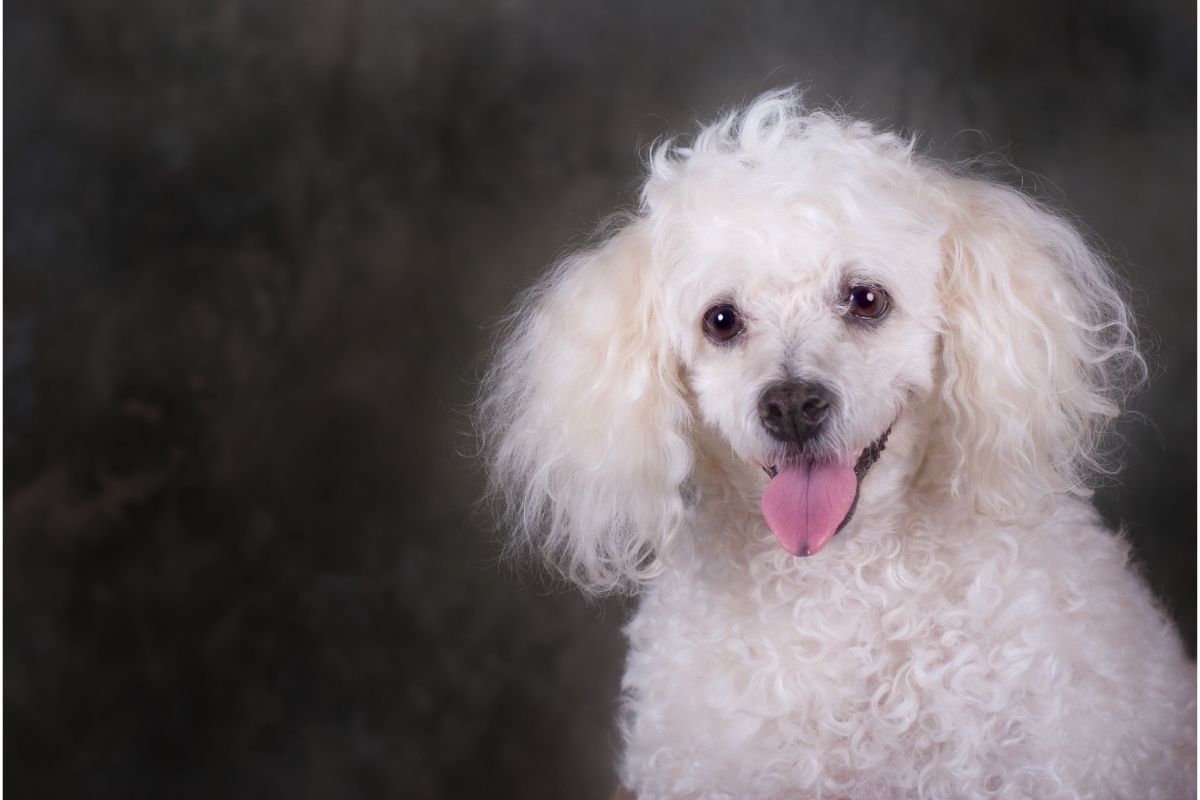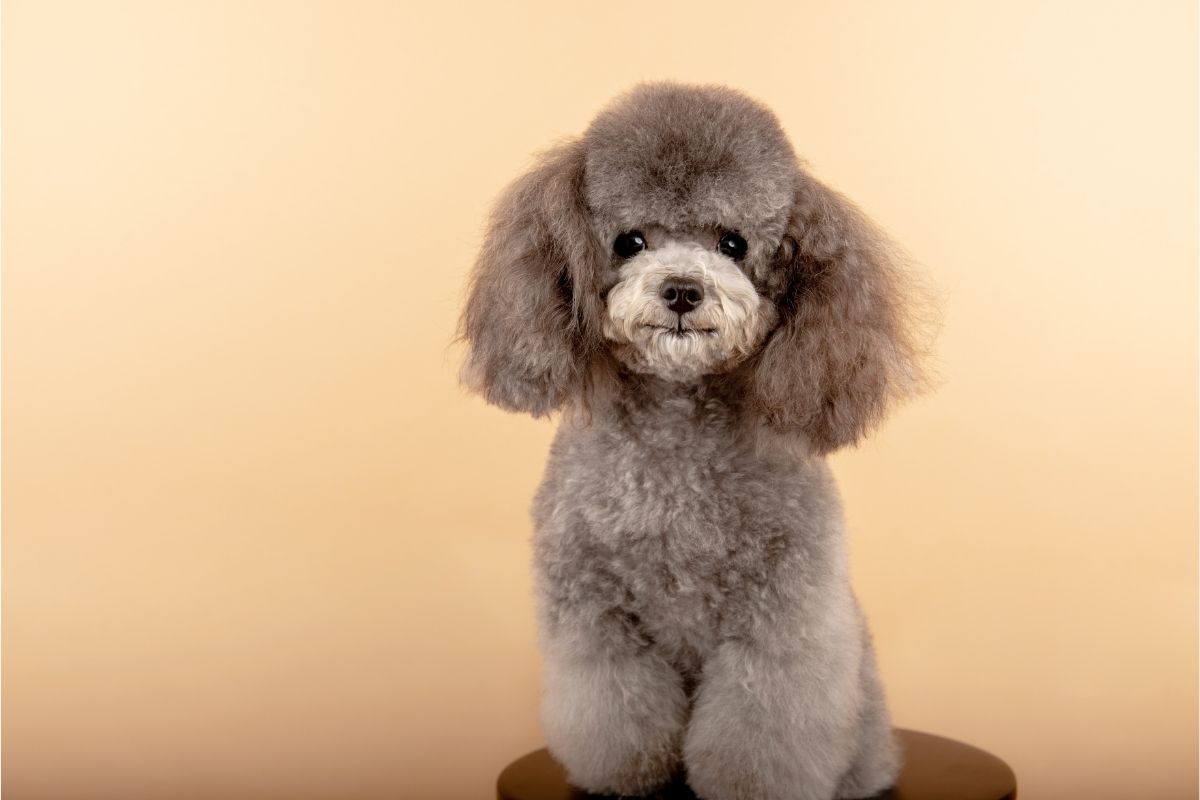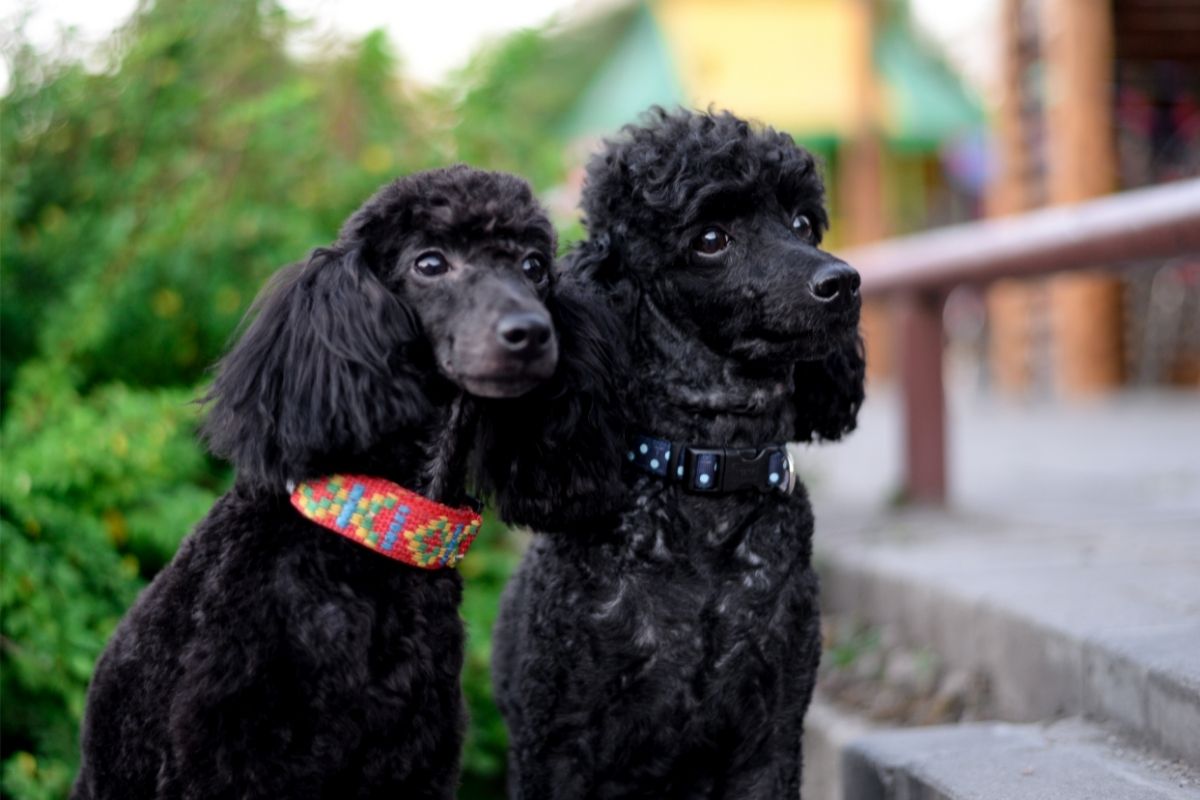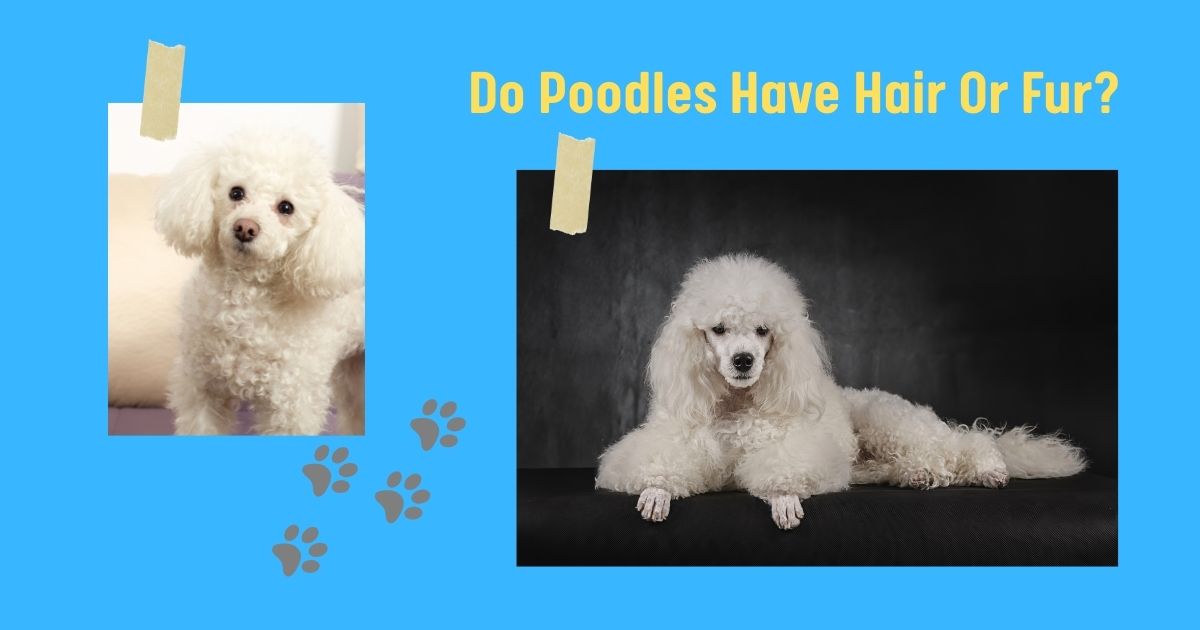What is the Difference Between Hair and Fur?
As a poodle owner or breeder, you may sometimes get asked this question, “do poodles have hair or fur?”.
The short answer is both. In reality, there isn’t any chemical difference between hair and fur. Both are structures made of keratin that grows from hair follicles.
But why is it that some people then believe that poodles have hair? Take a read below and learn more about the “differences” between hair and fur!

So, do Poodles Have Hair or Fur?
We’ve already covered that hair and fur are the same things. But, there is, of course, more to the story. Hair is the keratin strand that grows on humans, whereas fur is the keratin strand that grows on non-human mammals. This, of course, includes the poodle, as poodles are mammal animals- dogs.
Poodles, therefore, do have fur. The misconception that poodles have hair rather than fur comes from the fact that they shed very little. Some people even believe that they don’t shed at all. Poodles also have the exciting feature that their hair/fur generally grows if it isn’t trimmed regularly.
Often, people understand fur as something with a finite length, which is why a labrador that hasn’t been brushed or trimmed will not suddenly have fur down to the floor all of a sudden. But, it isn’t because the hair/fur stops growing; it falls out. This is also known as shedding.
Hair is, on the contrary, is perceived as something that will continue growing. This is not entirely true. Hair will stop growing at some point and fall out. The hair’s possible length, width, and color are genetically determined and are unique for each body.
In short, our lovely poodle friends have fur. But, unlike most dog fur, it takes a very long time before it falls out!
A Comparison Chart Between Fur and Hair
Although there isn’t that big a difference between hair and fur, there are some perceived differences in how we see the two:
| Description | Hair | Fur |
| Definition | Any of the threadlike strands growing from the skin of humans, mammals, and other animals. | The hairy coat of a mammal, especially when fine, soft and thick. |
| Growth | Each strand grows independently and tends to grow in patches around the body. | It grows in a synchronized manner and covers the entire body. |
| Length | Genetically determined, but can grow to very long lengths. | Will, for most mammals, fall out at a specific length, often no more than a few inches or centimeters. |
| Texture | Coarse or soft. | Coarse or soft. |
Fur vs. Hair- A Chemical Composition
Chemically, fur and hair are indistinguishable. This is because they have the same chemical composition. Both are mainly made up of keratin and a few other elements and molecules that affect their appearance and behavior.
Keratin is a fibrous, hard, and strong protein formed by cells, hair follicles within the germinal layer (the innermost layer of the skin). The shaft of the hair is produced and will slowly start growing. Eventually, the hair will penetrate the skin and appear like hair, or fur, on the skin of the human or the animal.
Hair Follicles Unpacked
Although hair and fur are the same things, there is a crucial difference between humans and animals. Within the hair follicle of animals, there is a core. This core allows a coating of the keratin strands that form the hair.
This coating provides animals with the insulation they need. It will insulate them from heat and cold and provide protection against the rain and even the water if they go swimming and the sun- preventing them from getting sunburned.
Side note: Dogs can still get sunburned in areas with little or no fur, so make sure to keep an eye on your dog.
In contrast, human hairs provide little to no insulation. If it is raining, your hair may keep some rain away from your scalp, but soon after that, you will get wet, and if the sun is high, you may also get sunburned.

Hair and Fur Growth Patterns
As we already discussed, there are some differences in how hair and fur grow. Human hairs are individual strands. Although it may seem like it grows all together, each strand will develop independently of the others. Should one change color, it will not affect the others.
On the other hand, fur tends to grow synchronized, depending on the weather conditions. For example, a polar fox will be brown in the summer and white in the winter. That is a synchronized change in the fur covering its body.
Poodles are unlikely to change fur color drastically, but most will change somewhat during their lifetime. For example, gray poodles are often born black!
Physical Attributes of Hair and Fur
The diameter of a human hair strand can range from 17 to 181 um, with the diameter of animal fur generally being relatively more prominent. It will, of course, vary from breed to breed, but also definitely between species.
A poodle’s hair strand is more delicate than a coarse-haired dachshund, but don’t worry, a bear, for example, will have thicker strands than even the most giant coarse-haired dog!
The Uses of Hair and Fur in Dogs
Human hairs are mainly on our heads, and people can also use them to make wigs. It takes numerous hair strands and a professional wig-maker, but if done correctly, the results can be so realistic that even the most eagle-eyed will struggle to determine whether it is a wig or not.
There are some animals where we humans use their fur for our clothes, mainly sheep or alpaca fur is very common. Dog fur is rarely used commercially for clothing or other items. But, it doesn’t mean it is not possible. Whether you have a dog that sheds a lot or a poodle that sheds very little, there will be some fur now and then- from brushing or trimming.
This fur can be spun and used to make something resembling sheep yarn, and if you are very good with a pair of knitting needles, you can make a pair of gloves to keep your fingers warm throughout the winter!

The Final Yap
Although fur and hair chemically are the same, there are still a few distinctions. Hair is placed on humans’ heads and will generally tend to keep growing until you cut it. As a result, it is often quite soft and provides very little protection from the elements (sun and rain, for example).
On the other hand, fur will often (there are a few exceptions) break or fall out when reaching its optimum length. It comes in quite a few different textures, ranging from coarse to very soft, and protects the animals.
Despite their soft curls, Poodles have fur- just like any other dog. It is, however, generally very soft and takes a very long time to break. This can give the impression that it will keep growing like hair. However, the hair will break and get stuck within the curls, which is why it is so important to brush your poodles. This will keep the fur, as well as your dog, happy and healthy!
